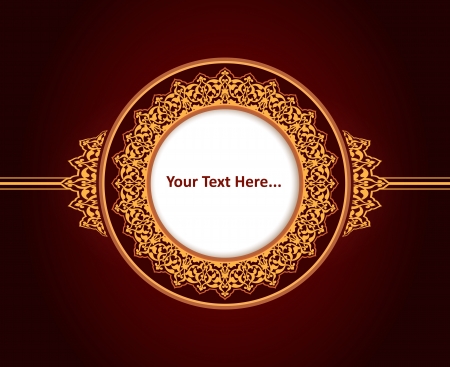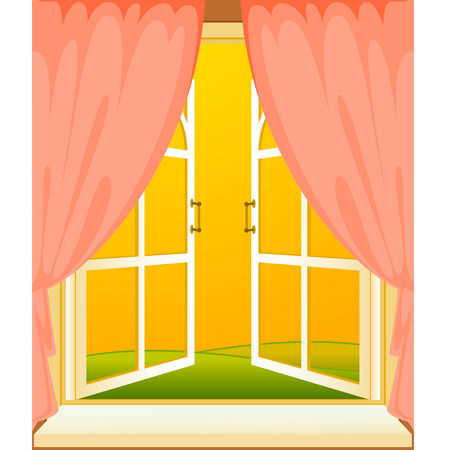Introduction to Indian Vastu Shastra for Conference Spaces
Indian Vastu Shastra, an ancient architectural science, continues to shape the way we design and experience interior spaces in India. Rooted deeply in Indian culture, Vastu Shastra provides time-honoured guidelines that harmonise spatial energies for enhanced well-being and productivity. In recent years, there has been a marked resurgence of interest in applying these principles within contemporary office environments, particularly in conference rooms where crucial decisions and collaborations unfold. The growing relevance of Vastu Shastra lies in its holistic approach—focusing not only on aesthetics but also on the subtle energy flows that influence creativity, communication, and collective success. As Indian organisations strive to create inspiring and balanced workplaces, integrating Vastu-compliant wall decor into conference room interiors is emerging as a powerful trend. This thoughtful alignment of tradition with modern design aspirations is helping businesses cultivate spaces that resonate with positivity, clarity, and purpose.
Significance of Wall Decor in Vastu
In Indian culture, the science of Vastu Shastra places immense emphasis on the proper arrangement and decoration of interiors, especially in spaces where decisions are made and ideas are exchanged, such as conference rooms. According to Vastu Shastra, wall decor is not just an aesthetic element; it plays a crucial role in shaping the energy flow within the room. The walls act as silent guides, influencing the focus, mood, and positivity of every meeting held within those four corners.
Properly chosen and placed wall art or symbols can direct positive vibrations throughout the conference space. For instance, paintings of serene landscapes, motivational quotes, or symbolic images like the rising sun or flowing water can infuse the environment with inspiration and clarity. Conversely, cluttered or negative imagery may disrupt concentration and lead to a sense of unrest among participants.
Role of Wall Decor in Energy Flow
| Vastu Element | Recommended Wall Decor | Impact on Conference Room |
|---|---|---|
| North Wall | Water elements, blue artwork | Enhances calmness and communication |
| East Wall | Rising sun motifs, green plants | Boosts creativity and new beginnings |
| South Wall | Motivational quotes, red/gold accents | Improves leadership and confidence |
| West Wall | Scenic landscapes, earth tones | Promotes stability and grounding energy |
Focus and Productivity Through Visual Harmony
The harmonious placement of wall decor as per Vastu helps maintain a balanced atmosphere that supports mental clarity during discussions. When participants are surrounded by thoughtfully chosen visuals that resonate with positive energy, it naturally enhances their ability to concentrate and contribute effectively. This practice aligns perfectly with the Indian ethos of integrating spiritual well-being into daily professional life.
Cultural Connection: Indian Symbols & Motifs
Selecting wall decor that reflects Indian heritage—such as traditional mandalas, lotus flowers, or Sanskrit affirmations—not only brings cultural pride but also strengthens collective purpose within teams. These visual cues remind everyone present of shared values and foster unity during collaborative sessions.
The essence of Vastu-inspired wall decor lies in its subtle power to transform a simple conference room into a dynamic space brimming with positive intent, focused energy, and harmonious interaction—a true reflection of mindful Indian living.

3. Choosing Colours According to Vastu
In Indian corporate culture, the selection of wall colours for a conference room goes beyond mere aesthetics—its deeply influenced by the principles of Vastu Shastra. The right hues not only enhance the visual appeal but also impact the energy flow, productivity, and collaboration among team members. According to Vastu guidelines, each direction is associated with specific colours that nurture positive vibrations. For instance, light blue or white on the north and east walls fosters clarity of thought and open communication, which are vital for successful meetings and brainstorming sessions.
When considering south-facing walls, shades like light red or maroon are preferred in India as they symbolise passion and determination—qualities essential for goal-oriented discussions. Green tones in the west bring harmony and balance, encouraging teamwork and mutual respect among colleagues. Its important to avoid dark or dull colours such as black or grey, as these can create a heavy atmosphere and may dampen creativity and enthusiasm.
Many Indian businesses also incorporate earthy tones like beige, cream, or soft yellows to attract abundance and prosperity. These shades resonate with the elements of nature and promote a sense of groundedness during high-pressure corporate dialogues. As per Vastu Shastra, maintaining consistency in colour schemes across the conference room’s walls can create a cohesive environment that supports focus, inspiration, and collective growth.
By following these traditional guidelines when choosing wall colours, organisations can ensure their conference rooms are not just visually appealing but also aligned with the energies that drive productivity and success in Indian workplaces.
4. Recommended Wall Art and Symbols
When designing a conference room interior that aligns with Indian Vastu Shastra principles, the choice of wall art and symbols is essential for fostering positive energy and supporting productive outcomes. Vastu-compliant artworks not only reflect Indian cultural values but also attract auspiciousness into the workspace. Below are some suggestions for suitable wall decor:
Vastu-Compliant Artworks
Choosing the right paintings or murals can enhance the flow of prana (life energy) in the conference room. According to Vastu, depictions of nature, such as flowing rivers, lush landscapes, or sunrise scenes, symbolize growth and new beginnings. Abstract art in calming colours like light blue, green, or cream is also favoured for its soothing effect on the mind.
Popular Indian Motifs and Symbols
| Symbol/Motif | Significance | Recommended Placement |
|---|---|---|
| Lotus Flower | Purity, enlightenment, and prosperity | East or North Wall |
| Sacred Om (ॐ) | Harmony and spiritual balance | Entrance or facing seating area |
| Peacock Feather Designs | Auspiciousness and beauty; associated with Lord Krishna | Northwest Wall |
| Banyan Tree Mural | Wisdom and stability; symbolises longevity and deep roots in culture | Southwest Corner |
| Kalamkari Art or Warli Paintings | Cultural heritage; reflects community and teamwork spirit | Main discussion area walls |
| Sacred Geometry (Sri Yantra) | Focuses energy and enhances clarity in decision-making | Behind the main seating or on a focal wall |
| Panchatantra Animal Artworks (Elephant, Cow) | Strength, intelligence, and abundance; revered animals in Indian culture | Northeast or Centre Wall |
Additional Tips for Selecting Wall Decor:
- Avoid images depicting violence, sadness, or abstract chaos as they may disturb the positive energy field.
- Select frames made of natural materials such as wood or bamboo to stay grounded in nature’s harmony.
- If displaying motivational quotes, prefer those from Indian thought leaders like Swami Vivekananda or Rabindranath Tagore for cultural resonance.
By thoughtfully curating artworks and symbols as per Vastu Shastra guidelines, your conference room can become a space where creativity blossoms, team members feel inspired, and every meeting is imbued with good fortune and shared purpose.
5. Placement and Direction: Optimising Decor Position
According to Indian Vastu Shastra, the correct placement and direction of décor elements within a conference room can significantly uplift its energy, fostering a productive and harmonious environment. The orientation of wall art, mirrors, clocks, and even motivational quotes must be thoughtfully aligned with cardinal directions to maximise positive vibrations.
North Direction: Channelising Prosperity
The North is governed by Lord Kuber, the deity of wealth. Placing images or paintings that symbolise growth—like lush landscapes or flowing water—on the northern wall can attract abundance and success in business meetings. Avoid displaying heavy or dark-themed art here as it may block prosperity.
East Direction: Inviting Enlightenment
The East signifies new beginnings and knowledge. Adorn this wall with inspirational quotes, images of the rising sun, or artworks representing clarity and wisdom. This enhances intellectual discussions during conferences and keeps participants energised throughout sessions.
South Direction: Ensuring Stability
The South is associated with strength and stability. Decorate this area with firm imagery, such as mountain landscapes or rooted trees, to instil confidence among attendees. Avoid mirrors on the southern wall as per Vastu guidance, since they may reflect away positive energy.
West Direction: Encouraging Relationships
The West governs relationships and networking. Family portraits are not recommended in a professional setting; instead, use abstract art or calming blue hues to promote teamwork and effective communication. Wall décor here should foster unity among colleagues and partners.
Central Space: Keeping It Light
The centre of your conference room should remain uncluttered. Heavy décor or large installations can impede energy flow. Prefer subtle wall accents or minimalistic pieces that maintain openness and enable free movement of prana (life force).
Tips for Harmonious Placement
Avoid placing clocks above doors or directly facing seating areas—this can create subconscious pressure regarding time. Instead, mount them on the North or East walls for a balanced sense of rhythm during meetings. Always keep sharp-edged objects away from direct line of sight; opt for rounded frames and soft designs to ensure a tranquil atmosphere.
By mindfully positioning décor according to Vastu Shastra principles, you not only beautify your conference room but also cultivate an aura that supports well-being, productivity, and positive collaborations—an essential aspect for any forward-thinking Indian workspace.
6. Incorporating Local Crafts and Textures
Bringing the essence of Indian craftsmanship and indigenous textures into your conference room’s wall décor is a powerful way to create a space that resonates with Vastu Shastra while reflecting India’s rich cultural heritage. Consider integrating handwoven textiles such as khadi, ikat, or chanderi as wall panels or framed art. These fabrics not only introduce vibrant colours and patterns but also carry positive energy according to Vastu principles.
Traditional motifs like paisleys, mandalas, and lotus designs can be painted or carved onto accent walls or used in decorative screens (jalis) made from locally sourced wood or metal. Such motifs are believed to attract harmony and prosperity, aligning with Vastu recommendations for corporate spaces.
Utilising natural materials like terracotta tiles, bamboo cladding, or stone murals adds an earthy touch, grounding the room’s energy. Hand-painted ceramic plates or brass décor pieces crafted by local artisans can be thoughtfully arranged to enhance both aesthetic appeal and Vastu compliance. For instance, placing these elements on the north or east walls invites positivity and inspiration during meetings.
To further blend modernity with tradition, opt for minimalist installations using traditional crafts—such as a geometric arrangement of Warli art canvases or a subtle border of Madhubani painting. This approach maintains a professional look while celebrating Indian artistry.
By consciously selecting sustainable and handmade décor pieces, you not only support local artisans but also create a conference room environment that is unique, inspiring, and energetically balanced according to Indian Vastu Shastra.
7. Conclusion: Achieving Balance and Wellbeing
In essence, aligning conference room wall decor with the principles of Indian Vastu Shastra is a thoughtful investment in both organisational harmony and employee wellbeing. When colours, symbols, materials, and placements are chosen as per Vastu guidelines, it creates an environment that supports positive energy flow—prana—which is essential for clear communication, teamwork, and productive decision-making. Such an ambience not only enhances focus and creativity but also helps to reduce stress among employees during high-stake meetings or brainstorming sessions.
Vastu-compliant interiors foster a sense of belonging and cultural resonance for Indian teams, while also projecting an image of rootedness and mindfulness to visiting clients or partners. The subtle yet profound impact of these elements can be seen in improved morale, greater trust among team members, and higher overall satisfaction at work.
When the energies within the conference room are balanced, discussions become more constructive, negotiations smoother, and outcomes more favourable. This holistic approach—blending age-old wisdom with modern corporate needs—ensures that success is not just measured in numbers but also in the wellbeing of everyone who enters the space.
Ultimately, embracing Vastu Shastra in conference room design is about creating a sanctuary where ideas flourish, relationships strengthen, and every meeting becomes an opportunity for growth—both personal and professional.

